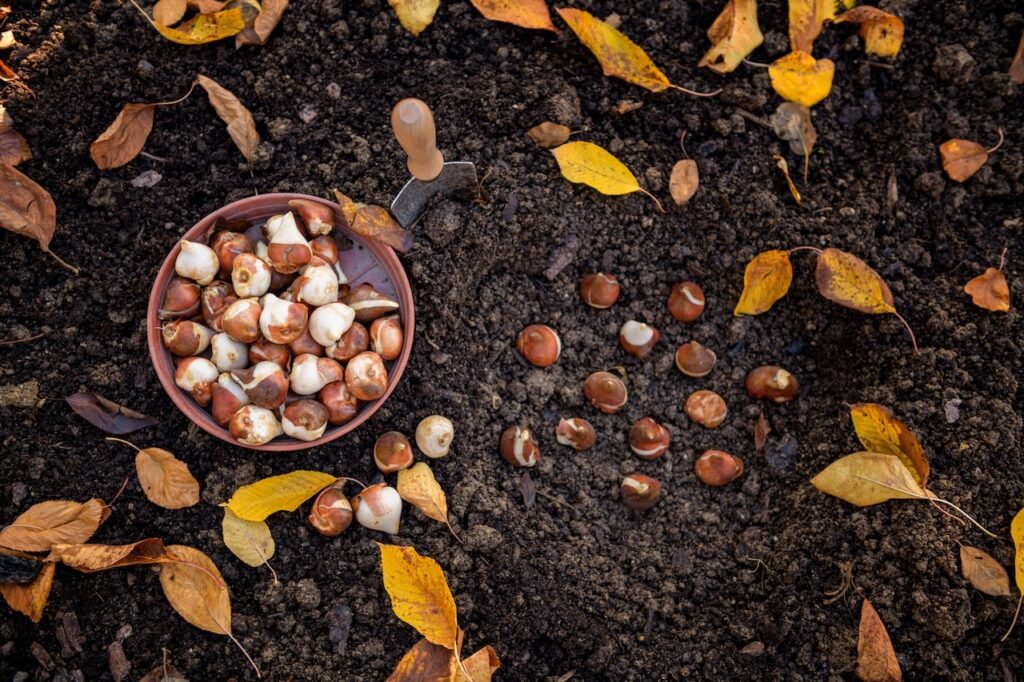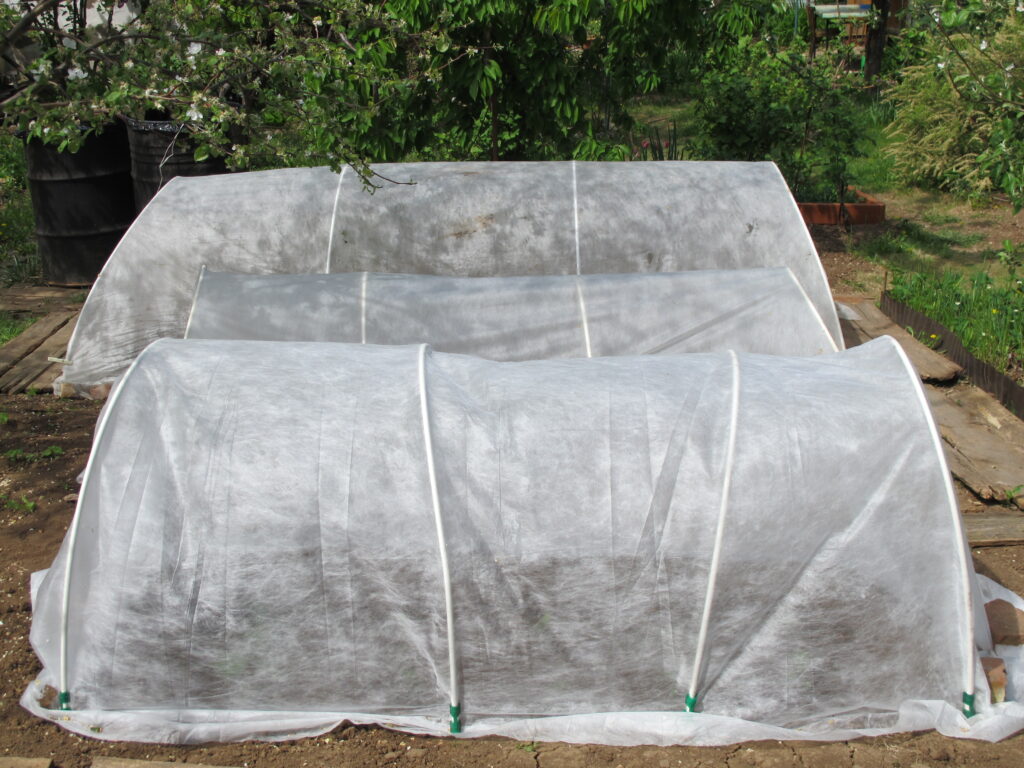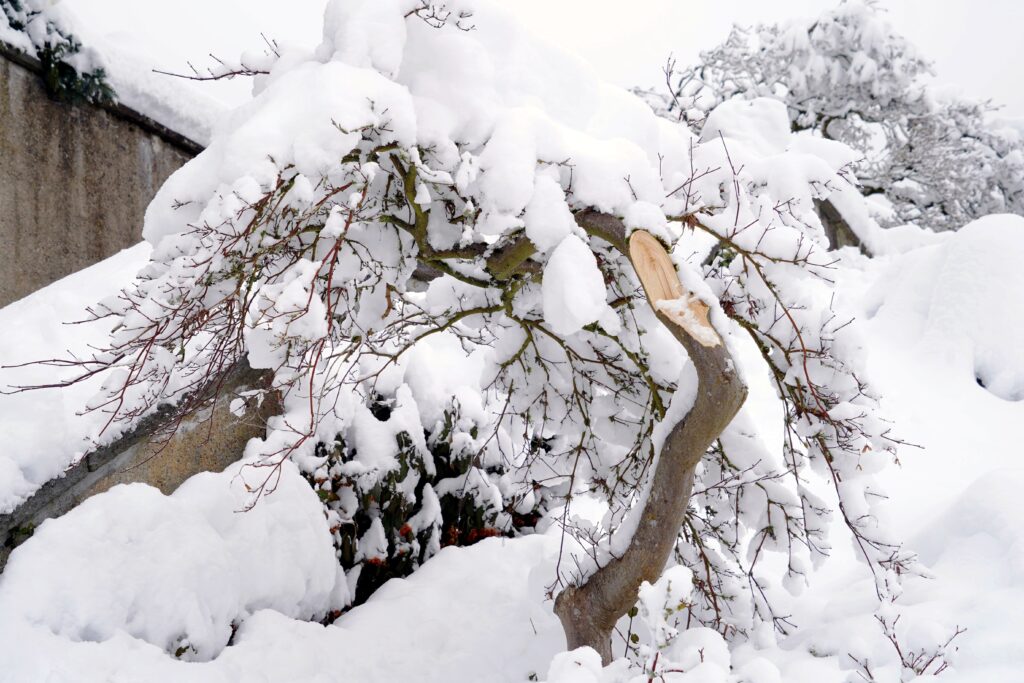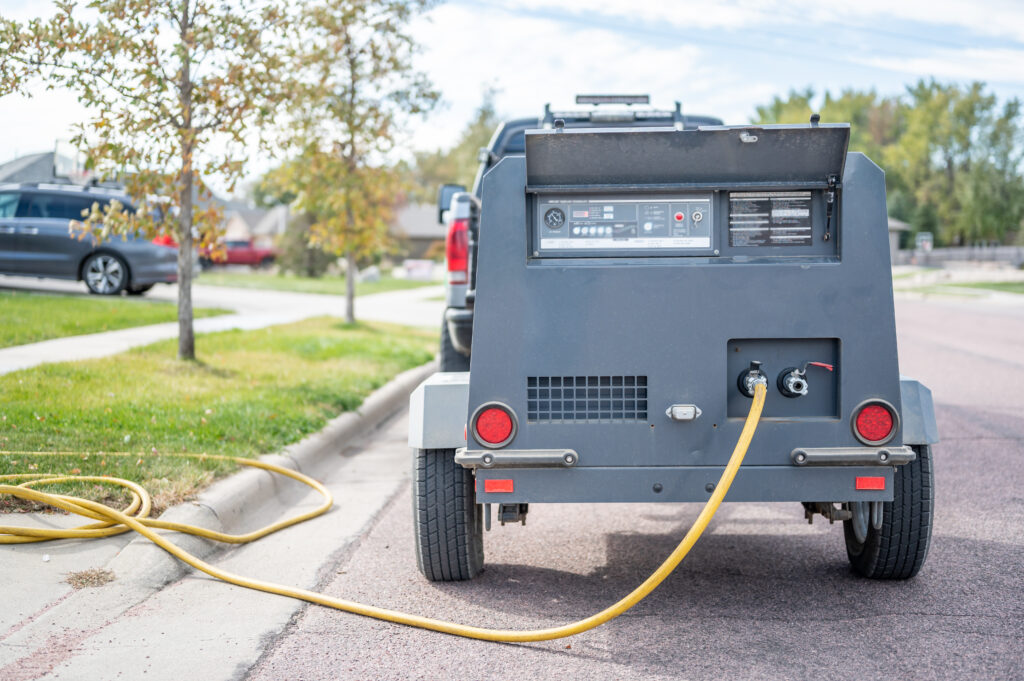October Gardening Checklist
October is when the season really starts to wind down. Cool nights and the first frosts remind us it’s time to tuck the garden in and prepare for winter’s arrival. From planting bulbs to storing tender plants, this month’s tasks help protect your landscape now and set the stage for a vibrant spring.
Plant bulbs & garlic
October is perfect for planting spring-blooming bulbs. Plant tulips, daffodils, crocus, and alliums six to eight inches deep in well-drained soil and space them according to type. Water them in well after planting. Garlic cloves go in pointy side up, about four inches apart, and should be covered with mulch to protect from frost. Water lightly after planting and keep soil slightly moist until winter. Check out our more in-depth guides for planting bulbs and garlic in the fall.

Save seeds & sow natives
Collect seeds from your favorite annuals, herbs, or vegetables for next year. Choose seeds that are fully ripened, brown, and dry. If they are still green or moist, they are probably not ripe and may not be viable. Let them dry a few more days if needed. Store your seeds in a cool, dry spot and label each packet so you know what is what later.
For native wildflowers, scatter seeds outdoors in the fall after you have experienced several killing frosts and when the soil temperature is consistently below 50°F. This prevents premature germination and allows the seeds to undergo natural cold stratification over the winter so they can sprout and grow in spring.
Wrap up the vegetable garden
Harvest tender crops such as tomatoes, peppers, and beans before the first hard frost. Bring green tomatoes indoors to ripen on a sunny windowsill. Cover other plants with frost cloths or row covers to extend the season. Shift your focus to cold-hardy crops like kale, spinach, carrots, and beets because they can keep producing well into fall. Remove any diseased foliage to reduce problems over winter.

Dig & store tender bulbs
Lift tender bulbs such as dahlias, cannas, and gladiolus after frost blackens their foliage. Gently brush off excess soil and trim leaves to about two inches. Store bulbs in a cool, dry place in sand, peat, or vermiculite. Check them periodically to make sure they stay firm and do not dry out or rot.
Bring in tender plants
Move houseplants and tropicals indoors before nights consistently fall below 45 to 50 degrees. Water them well before bringing them inside. Gradually adjust them to indoor light to prevent shock. Take cuttings of geraniums, sweet potato vine, or tomatoes to grow indoors over winter. Consider using grow lights if natural light is limited.
Prep trees & shrubs
Check trees and shrubs for weak, damaged, or crossing branches and prune them carefully. Removing these branches now helps prevent breakage from heavy snow during winter. Add two to three inches of mulch around young trees and shrubs to protect roots and retain soil moisture. While pruning, look for signs of pests or disease and remove any affected parts to reduce problems over winter.

Finish fall lawn care
Give your lawn a final mow, leaving grass about three inches tall. Rake or mulch fallen leaves so the grass underneath can breathe, but you can leave some leaves in place for beneficial insects. Focus on areas where leaves are extra thick so they don’t smother the lawn, and try to find a balance between cleanup and habitat. Apply a slow-release fall fertilizer if you missed September, and avoid cutting the grass too short because it can stress roots before winter. Consider aerating compacted areas to improve soil health over winter.
Winterize irrigation & water features
Schedule an irrigation blowout before the first hard freeze. Drain hoses, fountains, and birdbaths completely. Turn off outdoor faucets. Insulate above-ground valves or drip systems to prevent cracking over winter. Cover fountains or pond pumps if possible to protect them from ice damage.

Clean & store tools
Clean, sharpen, and oil pruners, loppers, and shears. Empty or stabilize fuel in lawn equipment. Check batteries in power tools. Store everything in a dry spot away from cold and moisture.
Protect outdoor spaces
Cover or store patio furniture, pots, and garden art before snow or ice can damage them. Use breathable covers for fragile containers to prevent cracking from moisture. Move delicate potted plants into sheltered areas or indoors. Empty containers that could collect water and freeze.
With these steps completed, your garden will be snug for winter and ready for a colorful, productive spring.
CATEGORY
10/03/2025
a word from our viewers